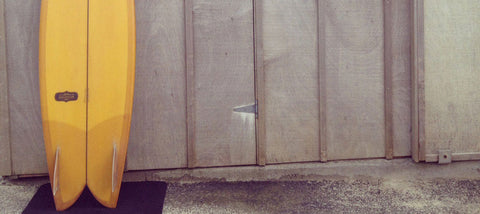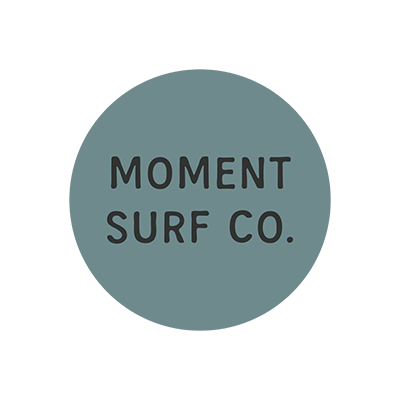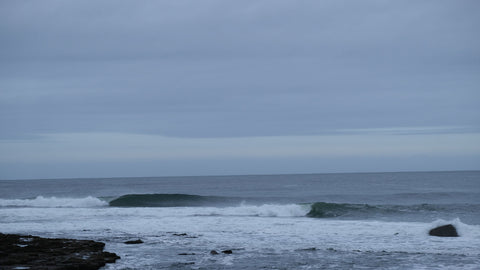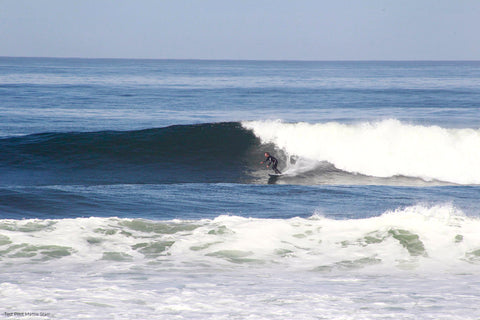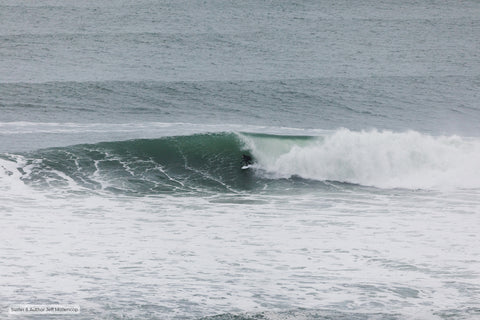We usually like to post our own content, but we thought this article was too interesting to not share.. enjoy!
They are the vehicles of our joy. The middle men between human and nature. The enablers in this strangely addictive liquid interaction of ours. They are surfboards – and most of us can’t get enough of them.

Whether it’s daydreaming about the next custom order or window shopping on the weekends, the average surfer can spend hours lost in the realm of possibilities that new foam and fiberglass can provide. But endless possibilities usually come down to tough choices. So to clear some things up before you make your next investment, we sat down with six of the best shapers in the business to discuss a few topics of myth and misconception. Dive in below and let Matt Biolos of …Lost, Britt Merrick of Channel Islands, Marcio Zouvi of Sharpeye, Todd Proctor of Proctor Surfboards, Hayden Cox of Hayden Shapes and Jon Pyzel of Pyzel Surfboards set the record straight.
WHAT IS THE BIGGEST MISCONCEPTION ABOUT SURFBOARDS?
Marcio: “It’s a mistake to think that the board alone will put on the show. Surfing is hard; you can’t simply hop on the board and expect to be ripping.”
Todd: “Just walking into the shop and looking at a picture of someone ripping on the wall and then looking at the height, weight and liter chart and just grabbing that board off the rack. You’ve probably had boards that looked like dogs that worked insane and you’ve had boards that look like such a blade and don’t go at all. You can solve that mystery by working with someone who dedicates their life to figuring it out for you.”
Jon: “I think that more and more people are putting too much emphasis on volume without understanding how it plays into different measurements and designs. When someone tells me, ‘6’1”, 29 liters,’ that could mean the same design in 6’1” x 18” x 3”, or 6’1” x 20” x 2.25”. It really helps to have a good idea of your current dimensions that you like in order to know where I am going to start.”
Hayden: “That they shouldn’t break in small waves… or that when they dent, it’s because of a poor lamination. Boards will generally break in smaller waves because of the acute pressure that is created in shallow conditions. This will put a rapid force against the board’s materials, causing them to be pushed past their elastic limit.”
Matt: “That they are expensive.”
WHAT’S THE MOST COMMON MISTAKE PEOPLE MAKE WHEN ORDERING A BOARD?
Matt: “It’s a toss-up between ordering with too much or too little volume.”
Hayden: “A common mistake with Haydenshapes is customers order the Hypto Krypto too long for them. Because the Hypto Krypto has a wide point forward and the volume forward of center, you need to keep the board short to allow you to stand on top of that volume. If the board is longer than necessary, it will feel like the board is directing you along the wave, rather than you controlling where you want the board to go.”
Jon: “Misrepresenting their ability and fitness, or being closed-minded to new design ideas. I am not just out to make a buck. I really want you to love your board, so I’m going to try to point you in a good direction if you can accurately tell me how you surf and trust that I want you to get a great board.”
WHAT’S THE MOST COMMON MISTAKE PEOPLE MAKE WHEN BUYING A BOARD FROM A SHOP?
Matt: “Ego. In the shop, they tend to want to be the guy who buys a potato chip.”
Marcio: “Not choosing the right surf shop. When you’re not sure what to buy, it’s crucial to find knowledgeable staff in the boardroom who can recommend the right design for your needs.”
WHAT IS THE MOST IMPORTANT ELEMENT OF A SURFBOARD (VOLUME, LENGTH, WIDTH, ETC.)?
Marcio: “There is no one most important element. They all come together to create the desired performance.”
Todd: “The rocker. The bottom curve and the whole contour that is set into that bottom curve. The two go hand in hand and are like one. It’s like a healthy marriage. When you get those two working together, that’s 90 percent of what makes a magic board.”
Matt: “The size of the board is most important. That can mean the length, width and thickness, or the overall volume. Once you have that right, rocker and outline combined with the bottom curve (concaves/vees, etc.) are the most important.”
Britt: “Outline, rocker and bottom contours are the most important elements of a surfboard. Together they are most determinate of a board’s performance. But the greatest of these is rocker. No matter what else is happening on a board, if the rocker isn’t right, it doesn’t go. The magic is found or lost in the rocker first.”
IS IT POSSIBLE TO REPLICATE A MAGIC BOARD?
Britt: “It’s possible, but not easy. With all the variables that go into a board, from foam inconsistencies, to shaping nuances, to glassing and sanding intricacies, true replication is tough. It’s often easier to make another magic board than a replica of a certain magic board. But that’s part of what is so fun and amazing about surfboards… they keep you working, searching and hoping for more. When it happens, it’s magic.”
Marcio: “It’s really hard but we’ve been trying. I think out of every 10 boards I make for Filipe [Toledo], four come out all right, six come out good, and out of those six maybe one will be the replicated magic one.”
Todd: “Yeah, it’s possible, but copying a board from a different shaper never works. I think it’s a spiritual thing. If you got a magic board from another shaper, why do you want to come here and have me copy it? Go back to that same guy and have him make you that same board. I feel strongly that the machine is an incredible tool for the shaper to evolve his own boards; not to copy someone else’s.”
Jon: “No. There are so many factors involved in building a surfboard: the foam (slightly different weights and consistency), the stringer (wood, from nature, with different grain and flex), different shaping machines, the hand-finishing of that shape, the fin boxes, the glass job (all hand-laminated, different rolls of fiberglass, different temperatures when glassing), the sand job (again, by hand, by a human). There’s no way to do two boards that are the exact same. That’s why we call the best ones ‘magic!’”
WHAT DO YOU THINK MORE SURFERS SHOULD KNOW ABOUT THEIR BOARDS?
Matt: “That no one making them, or stocking them in shops, is getting rich.”
Hayden: “I would say just start with your dimensions and volume. Learn to understand what dims you’re riding so you can start a conversation with your local retailer or shaper. From there you can get deeper into other areas of board design.”
Jon: “I think they should know how hard everyone who builds surfboards works to give them the best equipment possible. The shapers get the pats on the back and the glory, but we would all be nowhere without the guys that dedicate their lives to building boards and play vital roles in what you end up with.”
Marcio: “There are at least five experienced guys working on each surfboard. Every step of the process is as important as the design itself. Next time you order a board from your local shaper, don’t forget to bring a case of beer for all the crew at the factory. I guarantee the edges will be sharper!”
You can read the full article at Surfing Magazine's website
here as well!

